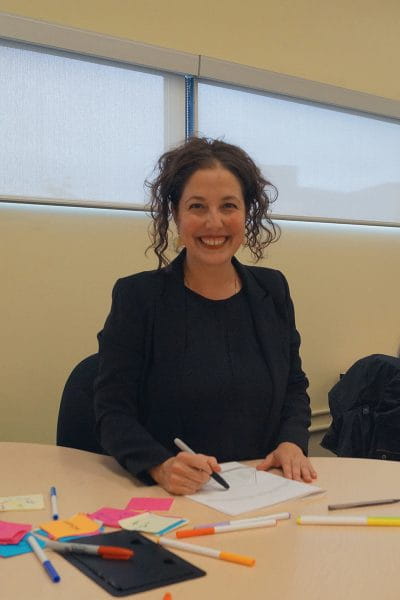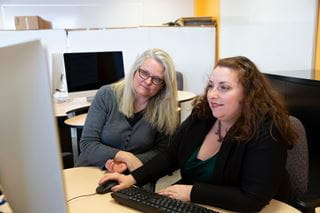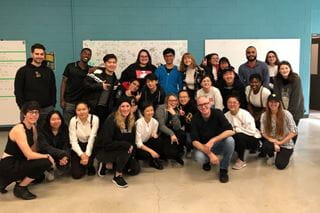Weaving myth, storytelling and creativity
 by Carolina Salcedo – Sep 25, 2018
by Carolina Salcedo – Sep 25, 2018 For Jennifer Phenix, there’s a certain universality to myth, storytelling and creativity that holds the power to inspire new perspectives – and it’s her pleasure to guide students through that process.
Phenix is a professor of Humanities in the Faculty of Humanities and Social Sciences, where she teaches classics and mythology, as well as creativity courses to degree students pursuing Sheridan’s Board Undergraduate Certificate in Creativity and Creative Problem Solving.
“Language and storytelling play such a meaningful part in the human experience,” she says. “For some people, it’s painting or film or other fine arts that reflect the nuances of the human experience, but for me there’s something about literature and language that uniquely capture thought and feeling. Myths, for instance, are examples of the intangible trying to make sense of the tangible.”
One of the greatest lessons myths have to teach us, says Phenix, is to know thyself, and to pursue that which brings you joy. For Phenix, this lesson was crystalized when she realized that her professional happiness lay in returning to teaching full-time after a stint in the private sector.

Today, she strives to connect her students with the teachings that underpin myths and classical literature. Through her class activities and assignments, she looks for unique ways to use these stories to inspire her students’ thinking and help reframe the lens through which they view the world, regardless of their academic background. “How students engage with the world, and the opportunities they choose to pursue…are all predicated upon their unique lens,” she says. “Once you’re aware of the lens, you can modify it.”
For many of her degree breadth students from the Faculty of Animation, Arts and Design, for example, mythology has helped them better understand story elements that they then use to shape the narratives of their own academic work. “Stories are one of the main ingredients in the works of animation, illustration and game design students,” says Phenix. She regularly works with these students on their thesis films and projects, helping them understand the universal elements that make stories compelling, such as the hero’s journey and its various motifs. She then guides students as they integrate various mythological and storytelling elements into their work. “I like to invite students to look deeply at the stories they know, and consider reframing how they see both those stories and their own personal narratives,” says Phenix.
“I like to invite students to look deeply at the stories they know, and consider reframing how they see both those stories and their own personal narratives.”
– Jennifer Phenix
Phenix also teaches creativity courses, which involve a number of reflective exercises that are essential to the creative process. Borrowing from the lessons of mythology, she believes creativity must begin as an internal process, as students explore what they can bring to their work, no matter their field. Her creativity classes are full of playful elements like crayons and playdoh, along with journaling and positivity exercises to help jump-start the creative process. “Cultivating a playful state of mind can be very beneficial when asking students to think differently about a familiar topic,” says Phenix. She often invites students to use The Sheridan Notebook, created by FHASS colleague Brandon McFarlane, a note-taking tool based on emerging research that connects colouring and mindfulness.
Phenix’s uplifting and caring approach to teaching makes a big impact on her students, who find her enthusiasm inspiring. “Jennifer loves the subjects she teaches so much, and her enthusiasm makes students eager to learn”, attests former student Parmin Singh Dhoot. “Her positivity is contagious – no matter what she’s teaching, the students in class are always tuned into what she has to say.”
As a humanities professor, Phenix is inspired by how creativity education is shaping Sheridan students. “I think Sheridan’s focus on creativity, both as a disciplinary area and as a space that invites and fosters new thought and perspective, gives students the opportunity to consider and reflect upon their own creative processes and ultimately the stories they tell that will continue to evolve and inform the work and lives they create,” she says.
Pictured at top of page: Jennifer Phenix.
Written by: Carolina Salcedo, Internal Communications Officer at Sheridan.
Media Contact
For media inquiries, contact Sheridan’s Communications and Public Relations team.




